When it comes to epic operas, few can touch the grand scale reached in Puccini’s Turandot. Without a larger-than-life stage presentation and luscious costumes, can you even begin to do Puccini’s final opera justice? This complexity can be seen in Turandot’s backstory as well, with an original story written centuries before the opera, Puccini’s research of Chinese melodies to implement into the opera and the fact that this opera has two librettists. Couple this with Puccini’s untimely death, and it’s a miracle that Turandot ever made it out in front of an audience. We want to recount this opera’s fascinating history before it’s set to grace our stage this May.
The origins of Turandot are more complicated than you might expect. The original story can be traced to Haft Peykar, a 12th-century romantic epic by the Persian poet Nizami Ganjavi. The epic consists of seven tales told by seven princesses, but it’s the tale of Princess Nasrin-Nush we want to focus on, as it’s the basis for Turandot. The story follows a Slavonic princess who makes her future husband risk his life to answer her riddles. Unlike Turandot, it isn’t because of ancestral trauma but to test if the husband has the qualities that make him fit to be a ruler. While this seems like a cut and dry beginning point for Turandot, here’s where things get tricky. François Pétis de la Croix published a collection of stories called The Thousand and One Days in 1722, believed to be inspired by Middle Eastern stories including Nizami’s. But it’s been speculated that these stories were actually original creations by de la Croix, so we can’t say for sure if de la Croix ever read Haft Peykar. One of de la Croix’s stories resembles the tale of Princess Nasrin-Nush, with the princess in question named Turandokht.
Pétis de la Croix’s version quickly gained popularity and was adapted into a play by Carlo Gozzi titled Turandot in 1762. Friedrich Schiller adapted Gozzi's play into another of the same name in 1801, which inspired Puccini to write the opera. In March 1920, Puccini met with librettists Giuseppe Adami and Renato Simoni and soon afterward they started work on the opera’s text. Puccini was so excited to get to work that he began composing music before the libretto was completed.
As eager as he was about the subject, Puccini had never been to China. Much of his interpretation was based on Italian perspectives of Chinese culture, leading to stereotypical representation. These stereotypes include the names of three characters (Ping, Pang and Pong), a lack of understanding of Chinese music as well as utilizing common Asian stereotypes of women known as the fierce “Dragon Lady” (Princess Turandot) and conversely, the sweet and meek “Lotus Blossom” (Liu).
Puccini’s attempt to emulate Chinese music included commissioning a set of 13 custom-made gongs. Additionally, he had been gifted a Chinese music box from the former Italian diplomat to China which proved to be vital to the score of Turandot, for it played the folk melody “Mo Li Hua” (Jasmine Flower), which served as a leitmotif for Princess Turandot. It was one of eight musical themes in the opera based on traditional Chinese music.
After four years of composition, the opera was nearly complete, with just the final duet needing to be scored. Puccini was not happy with the text his librettists supplied for the duet and he requested multiple rewrites, delaying the project for months. Puccini finally chose Adami’s fourth version, but only two days after that decision, Puccini was diagnosed with throat cancer. Before undergoing treatment, Puccini visited his friend, the great conductor Arturo Toscanini, begging him to not “let my Turandot die.” Puccini passed away from a heart attack only a month later on November 29, 1924.
Before dying, Puccini had composed and orchestrated everything up to the death of Liu in the final act. He left behind 36 pages of sketches for the unwritten ending of Turandot. Composer Riccardo Zandonai (best known for his opera Francesca da Rimini) had been Puccini’s choice to finish the opera, but Puccini’s son Tonio objected, and Franco Alfano was chosen instead. Alfano proved to be a challenge to work with. He added musical passages of his own to the ending, and he even added new sentences to the libretto. This led to Puccini’s publisher and Toscanini forcing him to create a second version that followed Puccini’s sketches more closely, even going so far as to exclude sections with text by Adami for which Puccini had left no musical sketches. Toscanini then cut three additional minutes from this revised finale. It is in this shortened version that we most often hear today.
A year and five months after Puccini’s death, Turandot premiered at La Scala, the iconic opera house in Milan, on April 25, 1926. The premiere went smoothly but was stopped by conductor Toscanini in the middle of the third act, after the death of Liu. He turned to the audience and spoke. “Here the opera ends, because at this point the maestro died.” (His exact words vary depending on the source.) The performance ended there, but Alfano’s ending was subsequently reinstated for the rest of the run.
Turandot saw massive success around Europe but was banned in China for decades due to the issues mentioned above. This ban would end in 1998, when the opera was performed in all its grandeur, staged by acclaimed filmmaker Zhang Yimou, under the name Turandot at the Forbidden City.
While Turandot has long been considered a classic, its story is still being written, as opera fans, conductors and composers debate and sometimes reimagine both the ending and work to correct some of the issues that come with producing an early 20th century work for modern audiences who are less accepting of stereotypical content, and rightly so. In 2002, LA Opera premiered a new ending created by composer Luciano Berio, and in 2008, a new version by Chinese composer Hao Weiya was unveiled during the inaugural season of Beijing’s National Centre for the Performing Arts. This month, Washington National Opera will premiere a new ending created by composer Christopher Tin and librettist Susan Soon He Stanton. Though Turandot may be an unfinished masterpiece, it’s the last piece of music written by one of opera’s greatest composers, one that will continue to amaze and transport opera fans to Puccini’s luscious soundscape.




